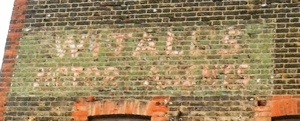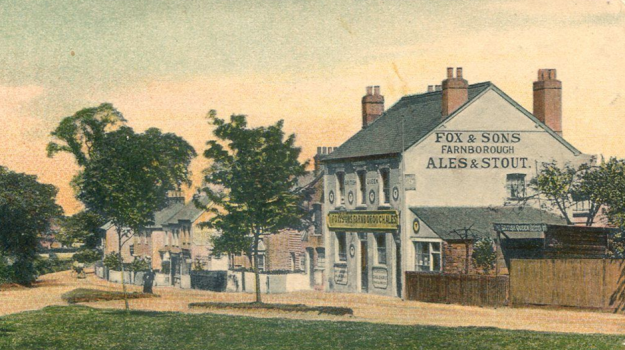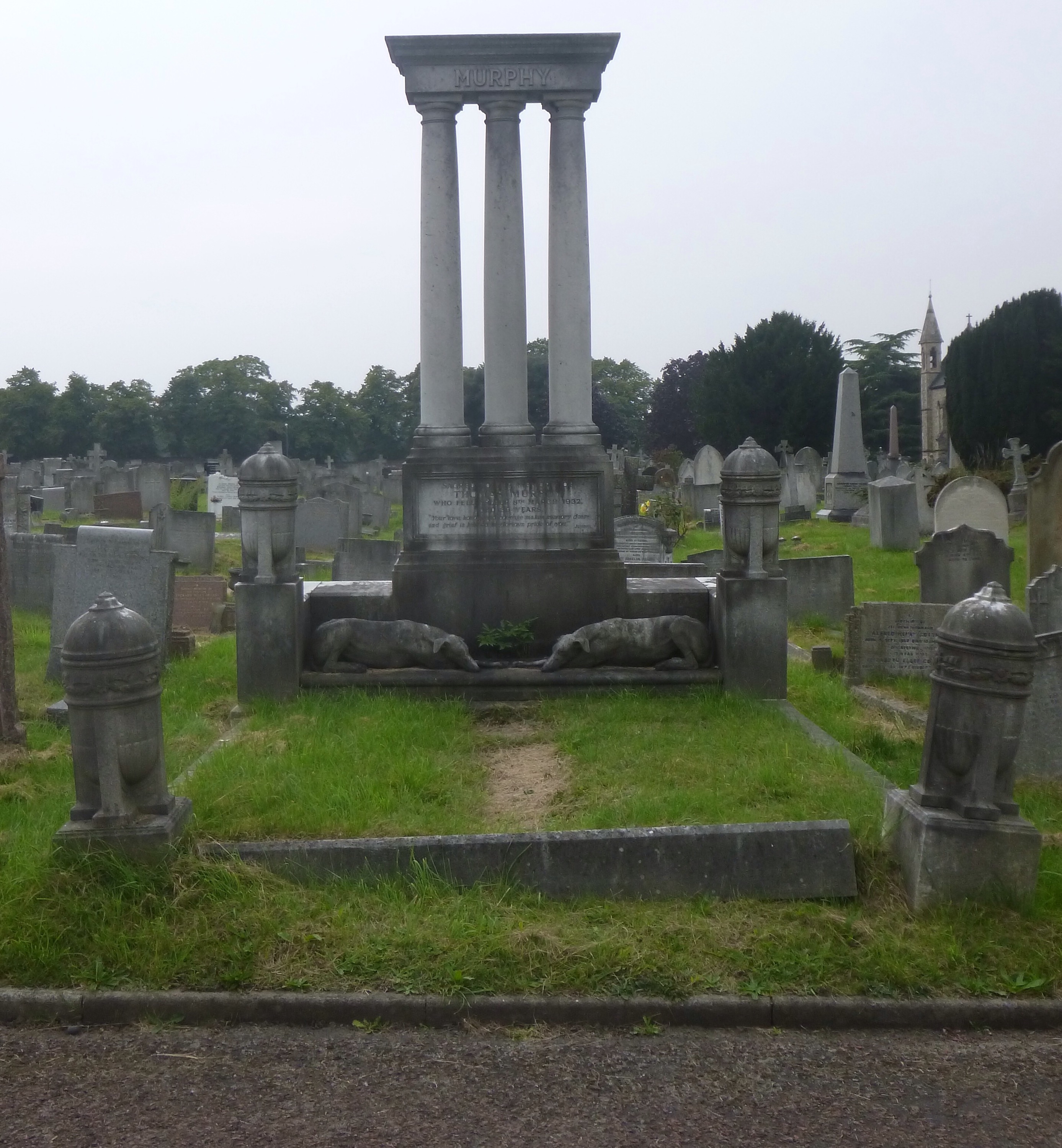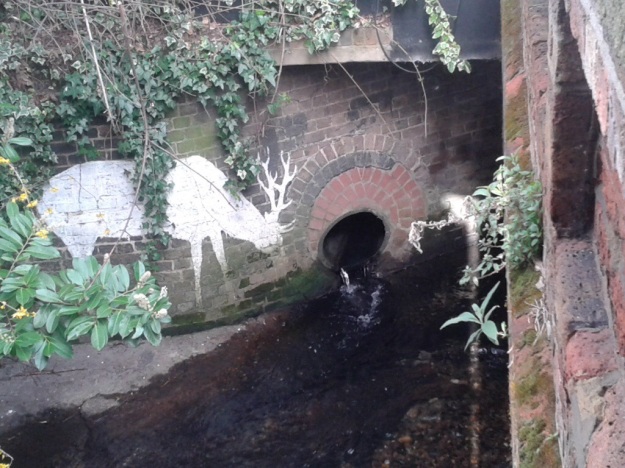On the corner of Marischal Road and Lee High Road a ‘ghost sign’ has recently (July 2021) appeared from behind an advertising hoarding. It is for a family business that traded from the site for around 90 years.

Ghost signs are painted advertising signs, they are not meant to be permanent – although they lasted much longer than their modern-day counterparts. The urban landscape used to be full of them but most have been lost – either to modern advertising, being painted over or the buildings themselves being demolished. They can be
- National – Bryant & May off New Cross Road; or
- Local – such as the Holdaway sign on Belmont Hill or Campions in Catford, these were usually on the side of the building that they operated from – this one falls into this category.
The age of this sign is a little uncertain in that while the front of the building may have been rebuilt either during or after World War Two, it is less clear with the wall that the ‘ghost sign’ is painted on. There could have been variants of the same design over the years – the current version certainly predates changes in telephone numbers from 1959 as ’01 852’ is painted over what was presumably ‘LEE’. The original could be as early as the 1920s as the gardening part of the family business started to be listed in Kelly’s Directories then.
Whatever the exact age of the sign, there is an interesting story of a long-lived family business, whose story we’ll now tell.
The Coppings had first opened a shop on Lee High Road in the late 1880s, at what was then 87 High Road, Lee – unlike further up the road, the numbering remained constant, only the ‘Lee prefix’ being added. The street it was on the corner of though had a different name, it was then Douglas Road. In the 1888 Kelly’s Directory it was referred to as ‘Copping, T & Sons, Fruiterer etc.’
The ‘T’ was Thomas; in the 1881 census he had been listed as a gardener living in Ravensbourne Street in Deptford – born in 1843 he came from Thornham Parva in Suffolk as did his sons Levi, born in 1867 and Spencer in 1868. They seem to have moved to Deptford in the 1870s as they were still in Suffolk in 1871 when the census was taken.
While Thomas’ name was over the window, in the 1891 census he is listed as a market gardener living in Kelsey Park in Beckenham. Living over the shop in 1891 was his son Spencer, who was presumably running the shop. He and his father seemed to have swapped roles by 1901 – with Thomas running what had been listed as a florist for several years – perhaps selling produce from Beckenham.
The shop, without any painted advertising sign, is on the corner of the second turning on the right of the postcard below – the first was the original end of Marischal Road, although that turning was lost with the construction of the Mercator Estate in the 1960s.
By 1911, though the name over the window of the florist shop was still Thomas, his son son, Levi (1867) was running the business. Presumably Thomas had died, although there is no obvious record of this. In the 1911 census he was living over the shop, listed as a ‘fruiterer, greengrocer and florist’ with 6 children including Levi (1890), George (1905) and Thomas (1907). Levi (1867) had moved around a lot since living in Deptford; they had lived in Ivy Terrace, close to St Stephen’s Church in Lewisham in 1891, although they’d been in Sidcup the year before where Levi (1890) was born. They had spent much of the next 15 years near Biggleswade in Bedfordshire, close to where his wife Susan hailed from. He was working there as a market gardener.
Soon after Levi (1867) took over the business, it expanded into 85 High Road. While it continued to be listed as a fruiterer, presumably also a greengrocer and florist, by 1925 there was change as the shop was listed as garden contractors too – presumably taking in the skills of the rest of the family too.
Levi (1867) was still living at 87 in 1939 with his son Thomas (1905) who was listed as a motor van driver. Next door at 85 was Levi (1889), with daughter Jessie (1912) and son Leonard (1915). Levi senior died in 1940, he was already widowed, and in his will of £1617 was left to sons Levi (1889), described as a florist, George and Thomas who were both listed as horticulturalists.
It is probably likely that brothers Levi (1889), Thomas and George, who in 1939 was listed as a Garden Contractor living in Morden Road in Blackheath, continued the business. Levi(1889) had moved to the Isle or Wight by 1960, where he died. It isn’t clear about George, but he may well have died in Beckenham in 1968.
The business was run by Thomas and his family from the 1960s, 85-87 was listed as a ‘Coppings Garden Centre’ or variants of this from 1965. The shop seems to have survived into the 1990s, while Thomas died in 1981, his sons Peter and Michael, along with the latter’s family took over the reins of running the shop.

By the 1990s 85-87 had become a shop selling aquarium and related supplies, run by Peter Copping.
Michael continued the gardening contracting business based on the Charlton/Woolwich borders, initially as Copping’s Landscapes then through Coppings (Maintenance) Ltd between 1995, and the death of Michael Copping in 2015. There are fond memories of working for the landscaping business in the late 1980s – ‘a rough tough crew.’
More recently the shop has become a Oriental food supermarket.
Notes
- Kelly’s Directories are via the always helpful Lewisham and Southwark Archives
- Census and related data is via Find My Past (subscription required)
- The postcard of Lee High Road is via eBay, March 2020
Thank you to Richard Sanderson for letting me know that the sign had appeared, without whom this post wouldn’t have happened. Thank you also to Syd Kennedy for making a link to the more recent gardening contracting business – see comments below.
Thank you also to Minnie Copping (see comment below) for helping join some of the strands of the story together.







































